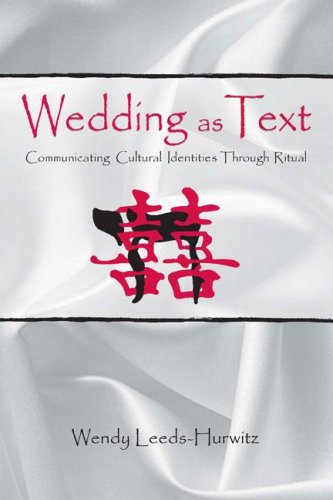

Most ebook files are in PDF format, so you can easily read them using various software such as Foxit Reader or directly on the Google Chrome browser.
Some ebook files are released by publishers in other formats such as .awz, .mobi, .epub, .fb2, etc. You may need to install specific software to read these formats on mobile/PC, such as Calibre.
Please read the tutorial at this link: https://ebookbell.com/faq
We offer FREE conversion to the popular formats you request; however, this may take some time. Therefore, right after payment, please email us, and we will try to provide the service as quickly as possible.
For some exceptional file formats or broken links (if any), please refrain from opening any disputes. Instead, email us first, and we will try to assist within a maximum of 6 hours.
EbookBell Team

4.4
52 reviewsThis book studies those who have accepted cultural difference into their daily lives in the attempt to learn how they have managed to do successfully. A wedding serves as the beginning marker of a marriage--if a couple is to manage cultural differences throughout their relationship, they must first pass the hurdle of designing a wedding ceremony. Over 10 years of study, the weddings of 113 couples from across the United States were documented through ethnography. The focus is on intercultural weddings--interracial, interethnic, interfaith, international, or interclass--because the central issue faced in any of these cases is really the same one of cultural difference. A wedding is, among other things, an identity display. This book asks the basic question: How is it possible to display different identities simultaneously? A variety of answers are detailed in the case studies provided. Six weddings are described at length in an innovative presentation style; the rest are used as shorter examples of the many issues that arise and how specific couples have coped with them. The theoretical concepts of community, ritual, identity, and meaning are given extensive consideration. Because material culture is visible it often takes on a particularly important role in these and in other examples of ritual. As a result, special attention is paid to food, clothing, and objects and their function as symbols in the complex semiotic event of a wedding. Focusing on how couples design a wedding ritual to simultaneously meet multiple and different requirements, this book provides: *extensive details of real behavior by real people (the result of the qualitative methods used in this research, specifically, ethnography); *an innovative format: six more traditional theoretical chapters--with examples integrated into the discussion--are matched to six "interludes" or detailed descriptions of the most successful examples of resolving intercultural differences; *a methodological appendix that details what was done and why these decisions were made; and *a theoretical appendix outlining the study's assumptions in detail.